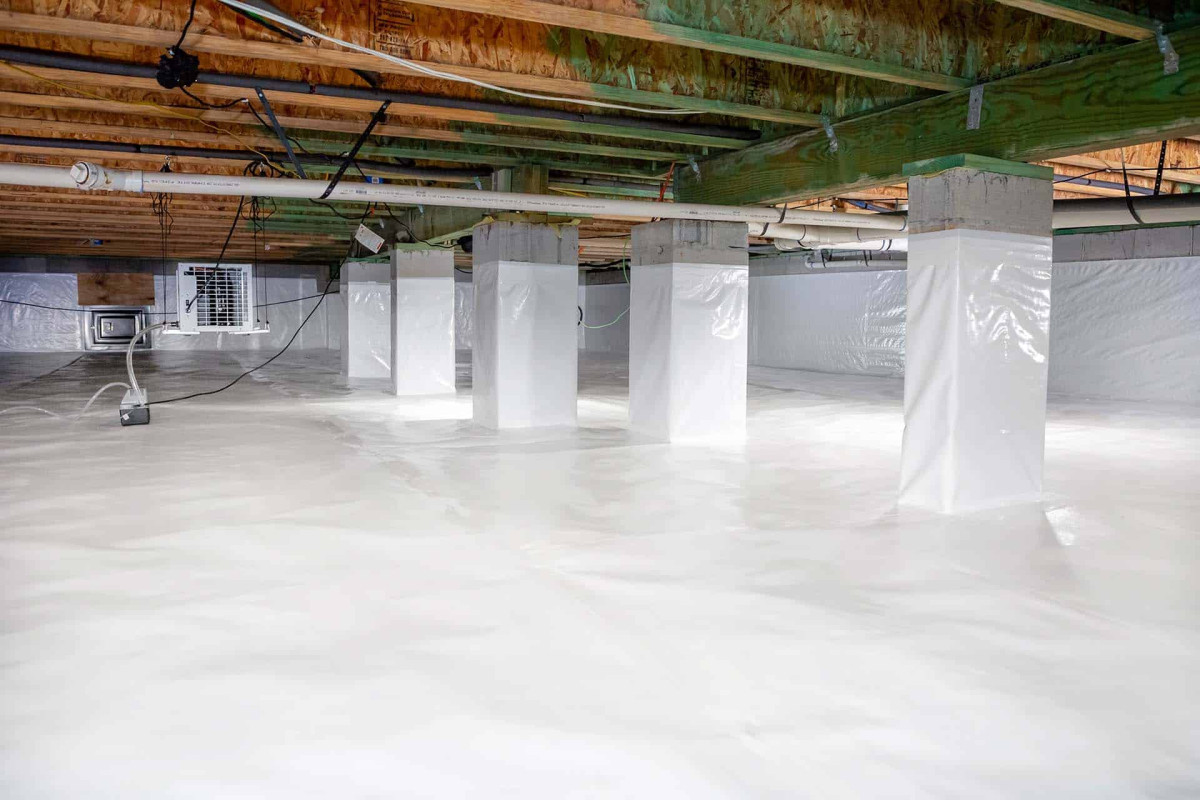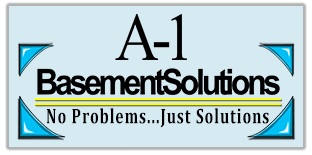Crawlspaces, often overlooked, play a critical role in maintaining the structural integrity of a home. Unfortunately, they are also prone to moisture issues that can lead to mold growth, wood rot, and pest infestations, ultimately affecting the air quality inside the house. Crawlspace waterproofing is a vital step to ensure that these areas remain dry and functional. In this article, we will explore the importance of crawlspace waterproofing, the common methods used, and how homeowners can benefit from addressing moisture issues in these spaces.
Understanding Crawlspace Vulnerabilities
Crawlspaces are typically found in homes built without basements and provide a buffer between the ground and the living space. These areas are more susceptible to water intrusion because of their proximity to the soil, which can absorb rainwater or groundwater. Common causes of moisture problems in crawlspaces include:
- Poor Drainage: Improper grading around the foundation can lead to water pooling near the crawlspace.
- Excessive Groundwater: High water tables or heavy rainfall can cause groundwater to rise into the crawlspace.
- Leaky Plumbing: Water from leaking pipes can seep into the crawlspace, causing humidity and condensation.
- Inadequate Ventilation: Poorly ventilated crawlspaces can trap moisture, exacerbating mold and mildew problems.
The Importance of Waterproofing a Crawlspace
Moisture control in crawlspaces is vital because water infiltration can lead to several problems:
- Mold Growth: Crawlspaces with high moisture levels create the perfect environment for mold and mildew. These fungi can spread to other parts of the home, reducing indoor air quality and causing health issues such as allergies, asthma, and respiratory problems.
- Structural Damage: Continuous moisture exposure can weaken the wooden beams and floor joists that support the home, leading to wood rot and compromising the structural integrity of the house.
- Increased Energy Costs: Moisture in crawlspaces can make it harder to heat or cool the home, as damp air requires more energy to regulate temperature.
- Pest Infestations: Insects like termites and rodents are attracted to moist environments, increasing the risk of infestations that can damage both the crawlspace and the rest of the home.
Crawlspace Waterproofing Solutions
To protect your home from the effects of moisture, a comprehensive crawlspace waterproofing strategy should be implemented. Below are some common methods:
1. Grading and Drainage Systems
The first step to waterproofing any crawlspace is ensuring that water is directed away from the foundation. This can be achieved by grading the soil around the house, so water flows outward. A proper drainage system, including gutters and downspouts, should also be installed to channel water away from the crawlspace. In areas with a high water table or frequent flooding, installing a perimeter drain system or French drain may be necessary to divert groundwater away.
2. Crawlspace Vapor Barriers
A vapor barrier is a durable plastic or polyethylene sheet placed over the ground and walls of the crawlspace. This barrier prevents moisture from the soil from rising into the space. Vapor barriers are particularly effective at reducing humidity levels and preventing mold growth. When installed properly, they create an airtight seal that significantly improves air quality and reduces the likelihood of condensation and dampness.
3. Encapsulation
Encapsulation takes the vapor barrier concept a step further by sealing off the entire crawlspace, including walls and ceilings, to create a fully enclosed environment. This method prevents all external moisture from entering the crawlspace and can improve energy efficiency by stabilizing the temperature in the home. Encapsulation typically involves the installation of a vapor barrier, insulation, and a dehumidification system to keep humidity levels low.
4. Dehumidifiers
Dehumidifiers are often used in conjunction with encapsulation to maintain a healthy moisture level in the crawlspace. By actively removing excess moisture from the air, dehumidifiers prevent the buildup of humidity and reduce the risk of mold and mildew growth. High-capacity dehumidifiers designed for crawlspaces are a long-term solution to ensure the space remains dry and free from musty odors.
5. Sump Pumps
In areas where groundwater is a major concern, a sump pump can be installed in the crawlspace to remove excess water. Sump pumps are usually placed in a sump pit, where water collects and is then pumped out of the crawlspace through drainage pipes. These systems are particularly useful in regions prone to heavy rainfall or flooding.
Due to their proximity to the soil, which naturally retains moisture. When not properly waterproofed, crawlspaces can become breeding grounds for mold, mildew, and pests. These conditions can lead to significant damage to the home’s structure and cause a host of health issues for the occupants.
There are several common problems that make crawlspaces vulnerable to moisture:
- Poor Ventilation: Many older homes were built with vented crawlspaces, allowing air to flow through. However, in humid climates, these vents allow moist air to enter, raising the humidity levels and leading to condensation on cool surfaces.
- Soil Saturation: Water from rain, poor drainage, or nearby sources can accumulate around the home’s foundation, eventually seeping into the crawlspace. This is especially true in areas with high water tables or homes built on slopes where water naturally flows downhill.
- Cracks in the Foundation: Over time, homes can develop cracks in their foundation walls. These small openings can allow groundwater or moisture from the surrounding soil to penetrate the crawlspace.
- Flooding or Standing Water: In some cases, crawlspaces can flood due to excessive rainfall, plumbing leaks, or poor landscaping. This standing water can significantly increase humidity levels, contributing to mold growth and wood decay.
The Importance of Crawlspace Waterproofing
Waterproofing a crawlspace isn’t just about preventing a damp environment; it’s about safeguarding the health of your home and its occupants. Here’s why crawlspace waterproofing is essential:
- Improved Air Quality: Crawlspaces directly influence the air quality inside your home. Moisture encourages the growth of mold, which releases spores into the air. These spores can travel through the HVAC system, circulating through the entire house, leading to respiratory issues and allergic reactions.
- Protection Against Structural Damage: Water in a crawlspace can damage the wooden beams and joists that support your home. Over time, moisture weakens the structural integrity of the wood, causing it to warp, rot, and eventually fail.
- Energy Efficiency: A damp, uninsulated crawlspace can significantly affect your home’s energy efficiency. Moisture in the crawlspace can cause the temperature inside your home to fluctuate, making your HVAC system work harder to maintain a comfortable environment.
- Pest Prevention: Moist crawlspaces are attractive to pests like termites, rodents, and insects. These unwanted guests can cause further damage to your home’s structure, insulation, and electrical systems.
Common Crawlspace Waterproofing Methods
There are several effective crawlspace waterproofing solutions that can protect your home from moisture issues. These methods can be tailored to the specific needs of your home based on its design, location, and the severity of the moisture problems.
- Encapsulation: Encapsulation is one of the most popular and effective methods for waterproofing a crawlspace. It involves completely sealing the crawlspace by covering the walls, floor, and any vents with a heavy-duty vapor barrier. This barrier prevents moisture from the soil and outside air from entering the crawlspace. Additionally, encapsulation often includes the installation of a dehumidifier to maintain low humidity levels.
- Vapor Barriers: A vapor barrier is a thick plastic sheeting installed directly over the crawlspace floor and walls to prevent moisture from seeping in. While vapor barriers are often used as part of the encapsulation process, they can also be installed on their own as a basic waterproofing measure. These barriers prevent ground moisture from entering the crawlspace, reducing humidity levels.
- Drainage Systems: A proper drainage system is essential for keeping water away from the crawlspace. Installing a perimeter drain around the foundation can redirect water away from the home. In some cases, a sump pump may be necessary to remove standing water that accumulates in the crawlspace.
- Sealing Vents and Doors: Sealing crawlspace vents and doors is an important step in preventing moisture from entering. Vents can allow humid outdoor air to enter the crawlspace, especially during rainy or humid seasons. Properly sealing these openings helps maintain a dry and stable environment inside the crawlspace.
- Insulation: Insulating the crawlspace walls and floor can help regulate temperature and humidity levels. Closed-cell spray foam is a common choice for crawlspace insulation because it provides a moisture barrier while also improving the overall energy efficiency of the home.
- Dehumidifiers: Even after sealing and waterproofing a crawlspace, some level of humidity may remain. A dehumidifier can help remove excess moisture from the air and maintain a healthy level of humidity in the crawlspace.
The Benefits of Crawlspace Waterproofing
Investing in crawlspace waterproofing offers several long-term benefits for homeowners:
- Healthier Living Environment: By reducing mold growth and improving air quality, crawlspace waterproofing can contribute to a healthier indoor environment, minimizing the risk of allergies and respiratory problems.
- Enhanced Structural Integrity: Waterproofing protects the wooden components of your home from moisture damage, preserving the structural integrity of the property and potentially saving you from costly repairs.
- Increased Home Value: A well-maintained, dry crawlspace is an attractive feature for potential buyers. Crawlspace waterproofing can increase the value of your home and make it more appealing in the real estate market.
- Energy Savings: By improving insulation and preventing moisture buildup, crawlspace waterproofing can lower your energy bills by making your HVAC system more efficient.
- Pest Control: A dry crawlspace is less likely to attract pests, reducing the risk of infestations that can cause further damage to your home.
When to Call a Professional
While some homeowners may attempt DIY solutions for crawlspace waterproofing, it’s often best to consult with a professional. A qualified contractor can assess the specific moisture issues in your crawlspace and recommend the most effective solutions. Professionals have the experience and equipment to install vapor barriers, encapsulate crawlspaces, and ensure that drainage systems are properly installed and functioning.
Crawlspace waterproofing is a critical investment in the long-term health and value of your home. By taking steps to address moisture issues, you can protect your home from structural damage, improve air quality, and create a more energy-efficient living space. Whether through encapsulation, vapor barriers, or drainage systems, crawlspace waterproofing offers a range of solutions that can keep your home dry, safe, and comfortable for years to come.
Contact the Professionals at A-1 Basement Solutions Today! 908-322-1313





